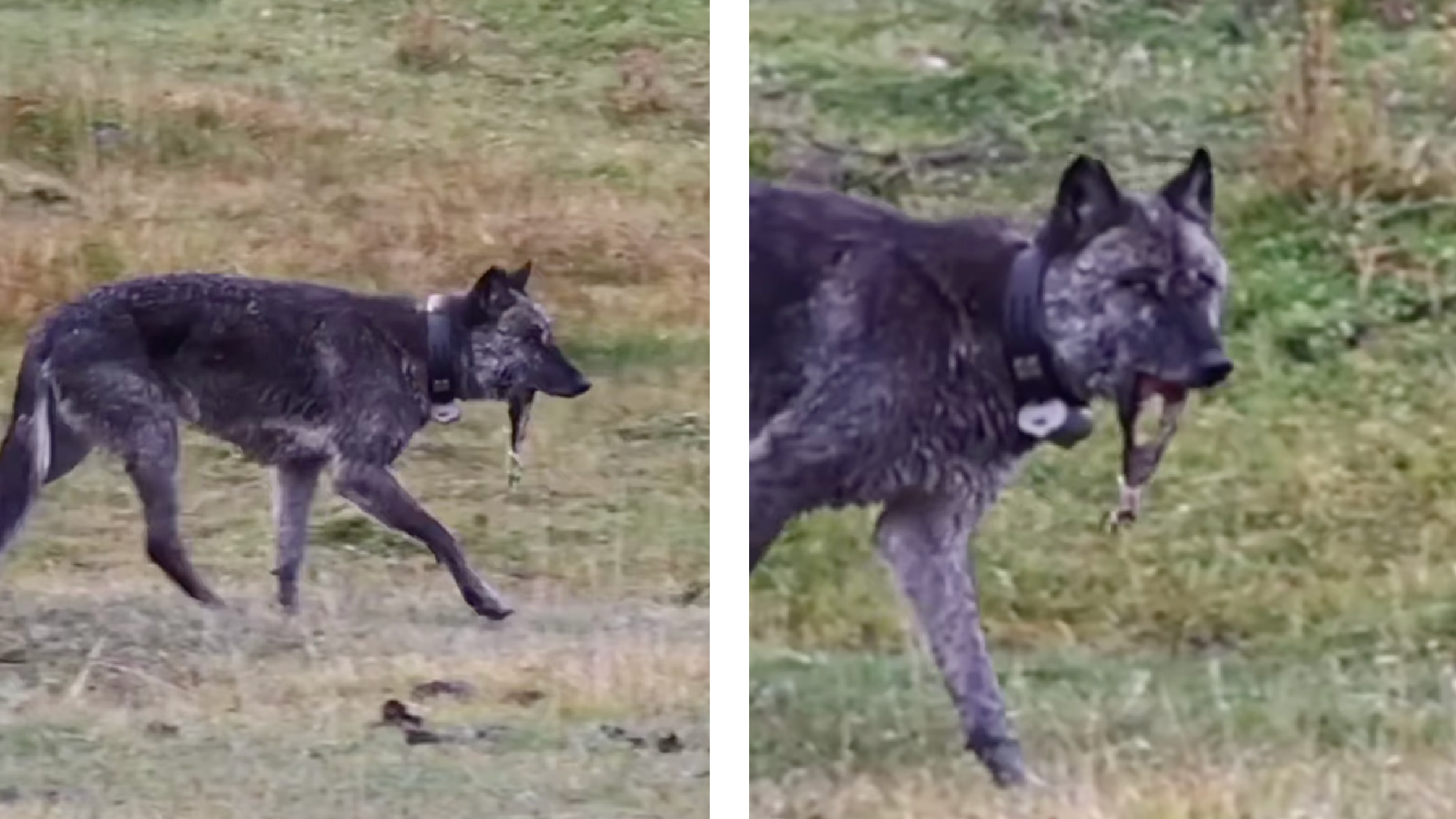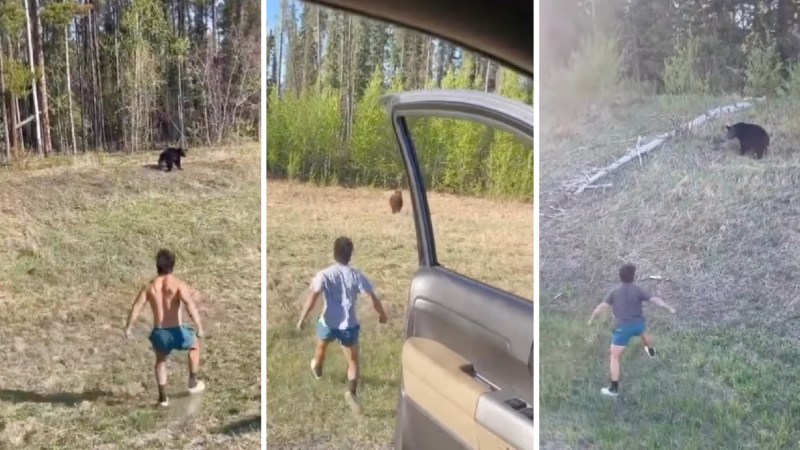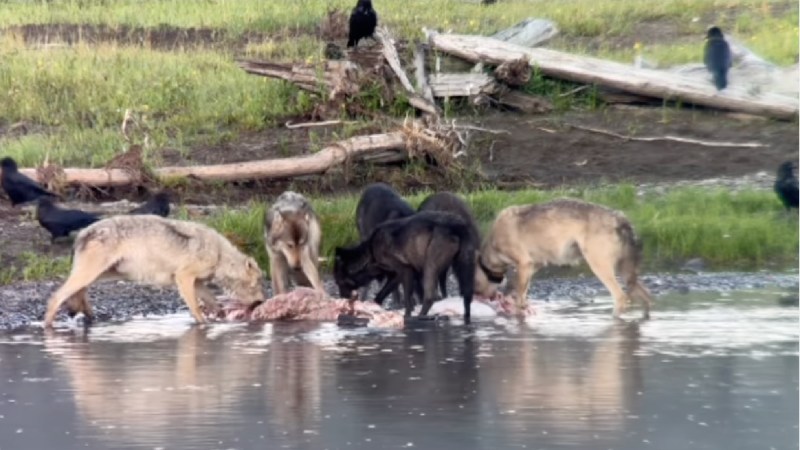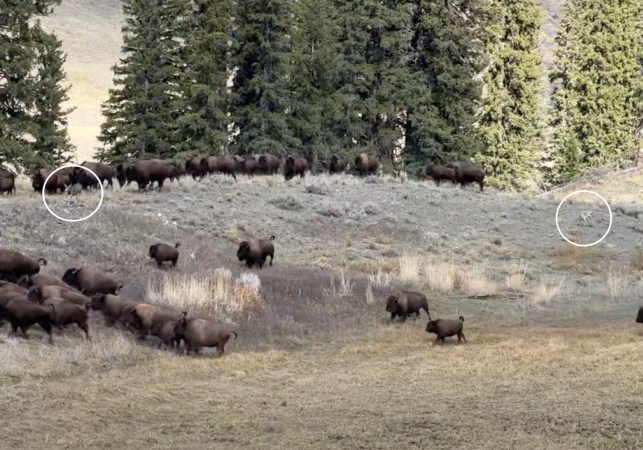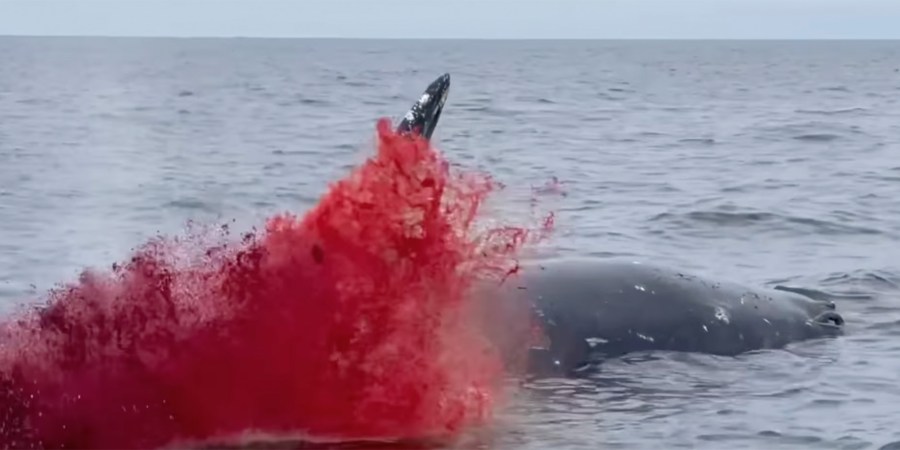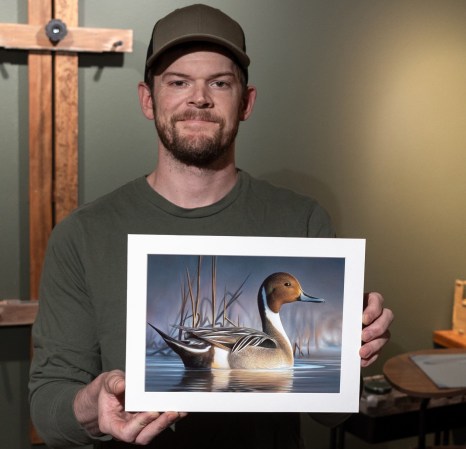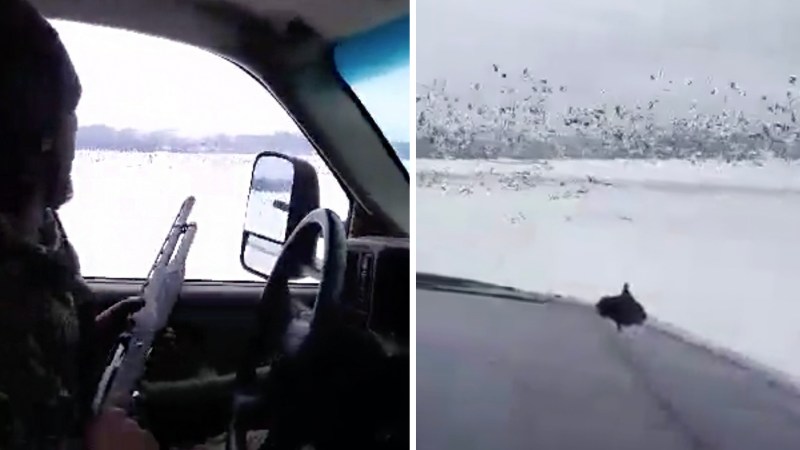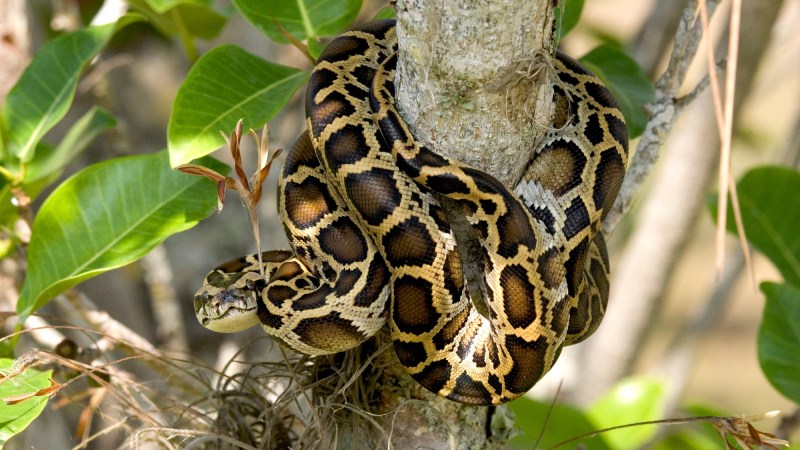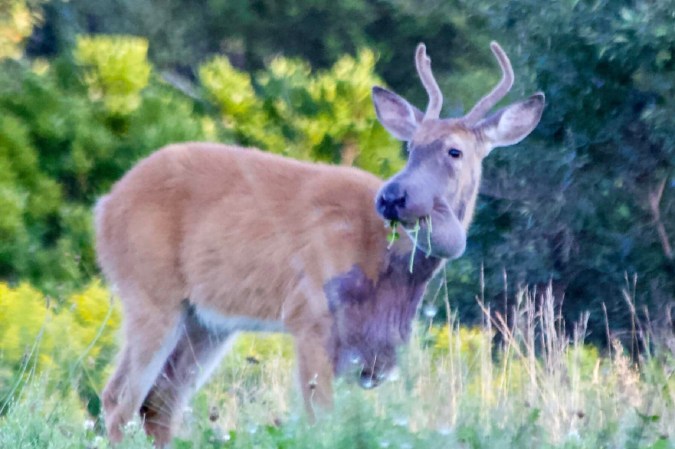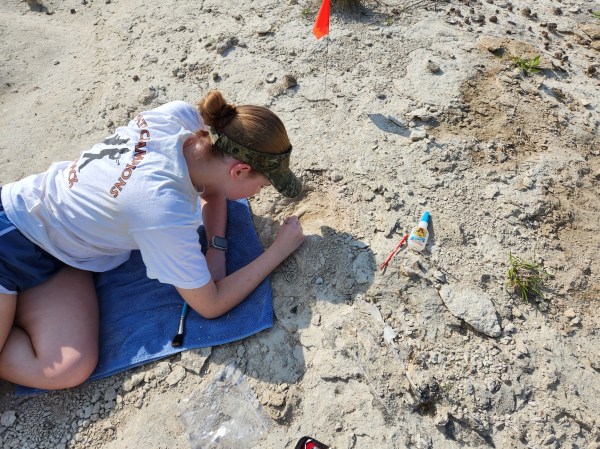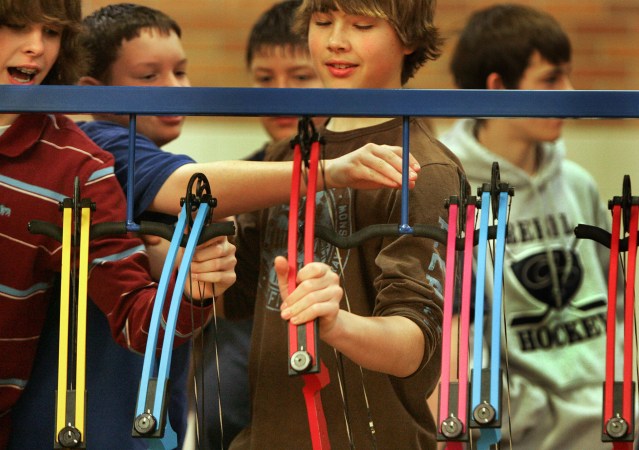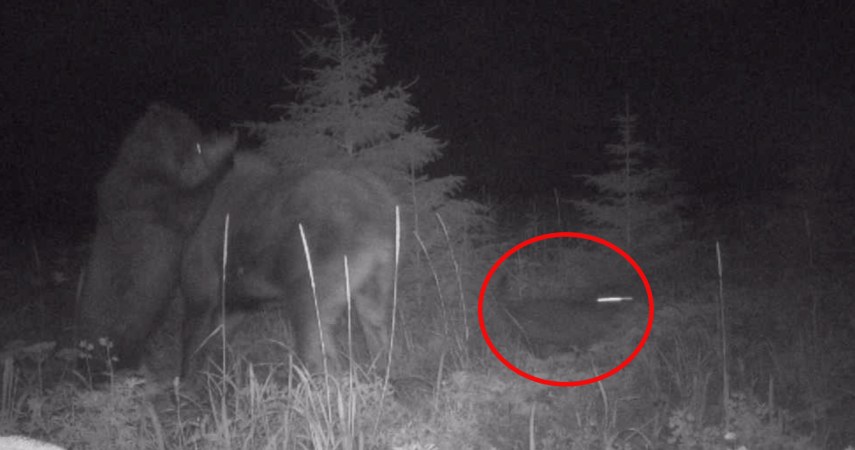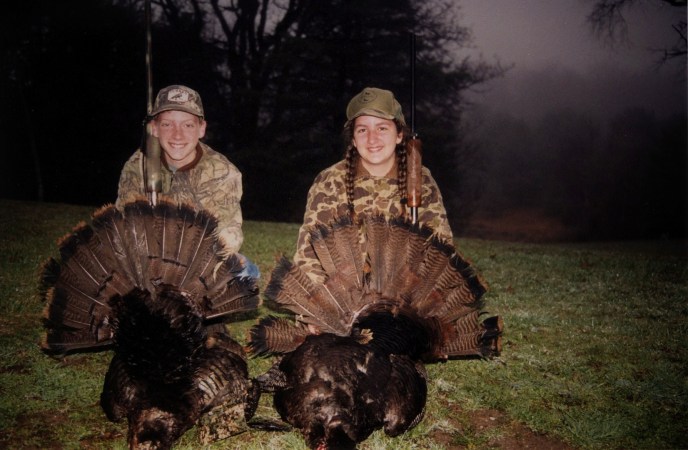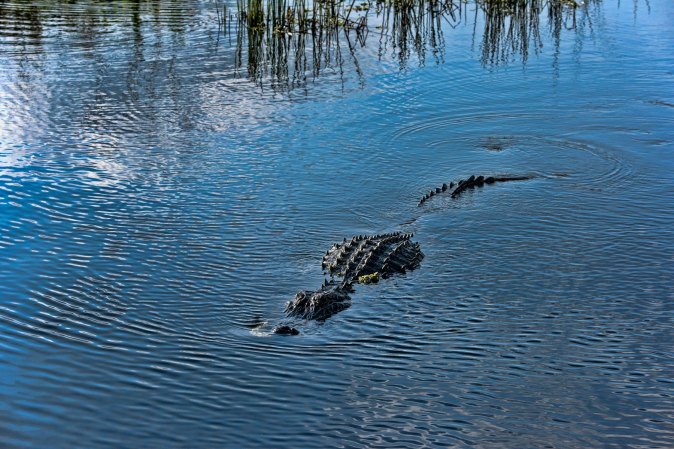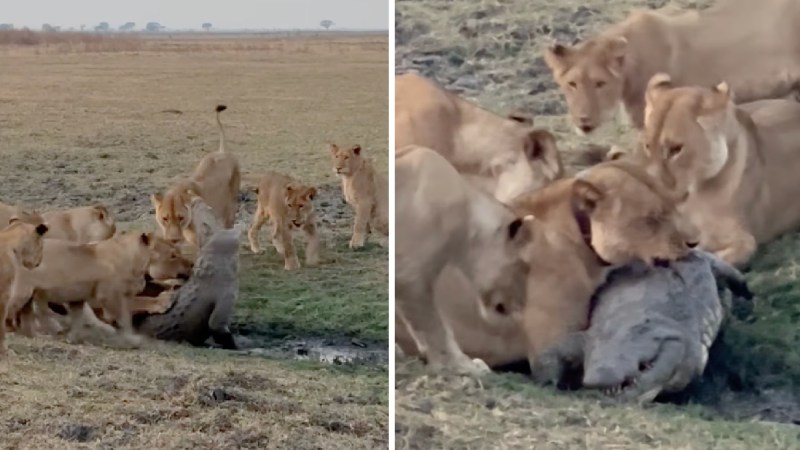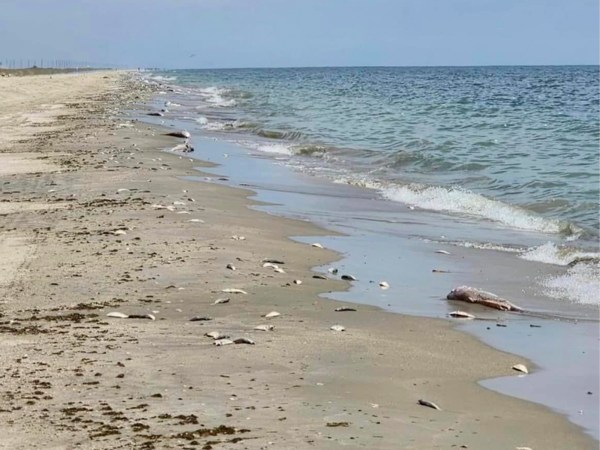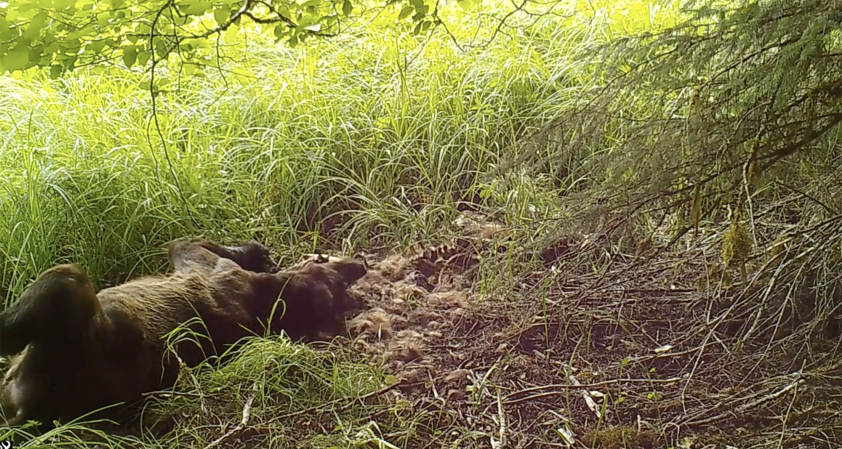Harrowing footage of wolf 1276F from Yellowstone’s Junction Butte pack emerged on Instagram on Oct. 4. In the video, captured by Yellowstone wildlife photographer Peggy Peregrine-Spear, the collared female wolf walks across a field sporting a brutal injury that claimed her lower jaw, leaving nothing but a thin piece of flesh behind.
“Her injury is possibly from a hunting encounter with either an elk or bison and is said to have happened around Sept 26,” Peregrine-Spear writes in the caption. “YNP is aware of her situation.”
Popular Instagram account Nature is Metal reposted the footage on Oct. 11. Aside from quips about how tough the wolf is and how brutal nature can be, some commenters ask a common question: Now what?
A few recommend the National Park Service or the Wolf Project construct and surgically attach a new prosthetic jaw for the wolf. Others ask about euthanasia to put the wolf out of her misery, as she likely struggles to eat and drink without half of her mouth. While it remains unclear whether YNP staff will take any action, the idea that wildlife in Yellowstone is somehow less wild and more ripe for human intervention than wildlife elsewhere pervades through the comments.
“Isn’t the whole point of the collar to monitor and help these wolves live longer so they can mate?” one commenter asks. “Put the wolf under anesthesia and put it in a wolf sanctuary or just end [its] suffering.”
But the NPS takes a strict, public stance on not intervening with wildlife through rescue or habilitation.
“Actions like feeding, husbandry, and rehabilitation contradict the National Park Service mission by shielding animals from the forces of natural selection and creating a zoo-like atmosphere where animals require assistance or protection from people,” NPS writes. “Rehabilitation itself is a difficult task with an uncertain outcome. These activities are expensive and divert funds that could otherwise be used on more widespread conservation and restoration efforts.”
YNP officials are occasionally forced to intervene when human action dooms wildlife. For example, they euthanized a young bison calf who was rejected from the herd after a tourist attempted to save it from falling into a river on May 20, 2023. They released a public statement explaining their decision a few days later.
“We made the choice we did not because we are lazy, uncaring, or inexpert in our understanding of bison biology. We made the choice we did because national parks preserve natural processes,” they write. “Every day in national parks, some animals die so that others may live. In fact, as many as 25% of the bison calves born this spring will die, but those deaths will benefit other animals by feeding everything from bears and wolves to birds and insects. Allowing this cycle of life to play out aligns most closely with the stewardship responsibility entrusted to us by the American people.”
Watch Next: Yellowstone Wolves Chase Grizzly off Elk Carcass
This cycle will claim 1276F and every other wolf, bison, elk, deer, fish, snake, and bug in Yellowstone sooner or later. As Nature is Metal often points out in their posts, death is just a natural part of life, and videos like this one serve as a reminder of it.
“Yes, this wolf’s days might seem like they are coming to an end,” the caption on the Nature is Metal post reads. “But keep in mind that animals do not indulge in self-pity or despair.”

